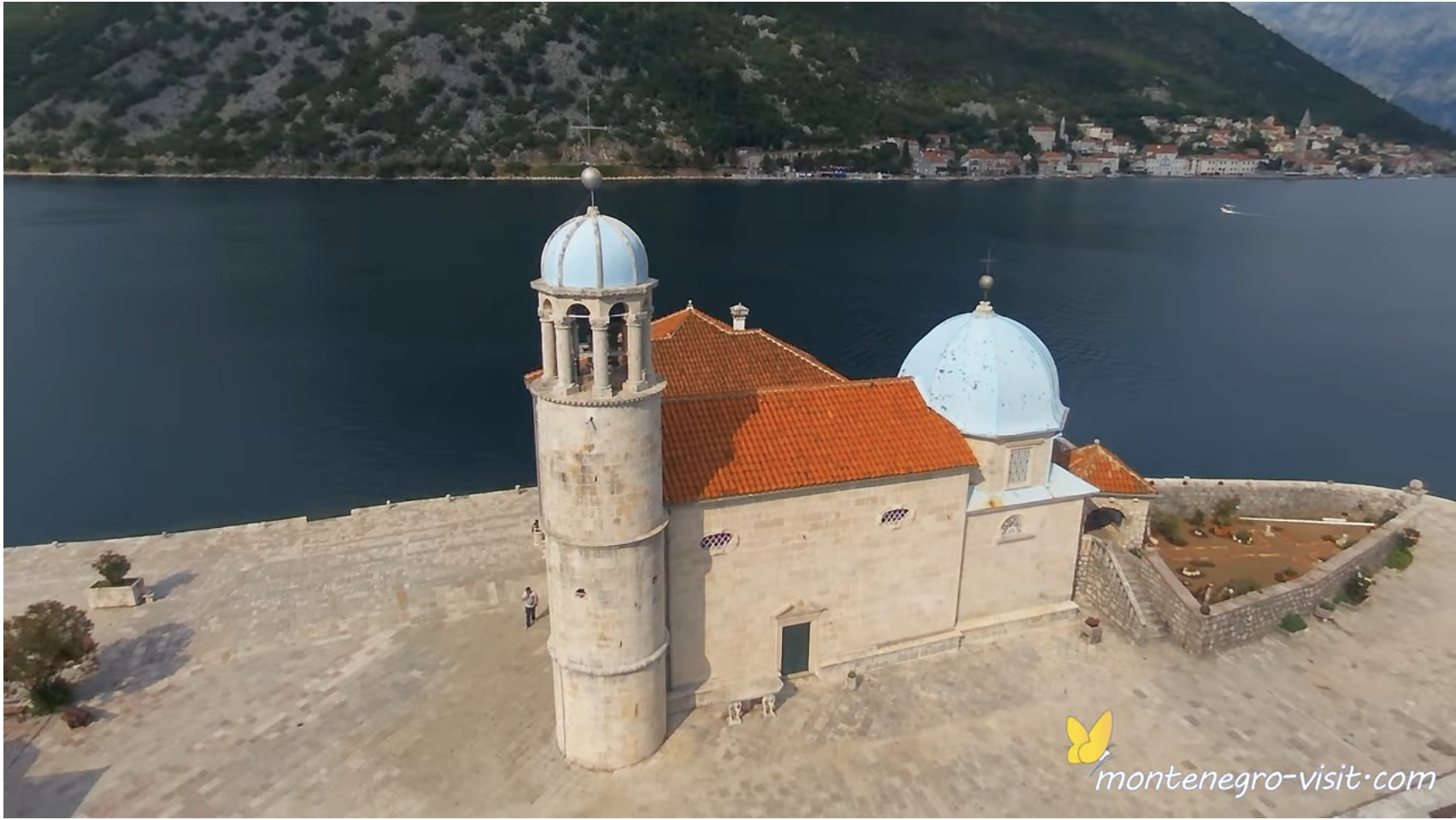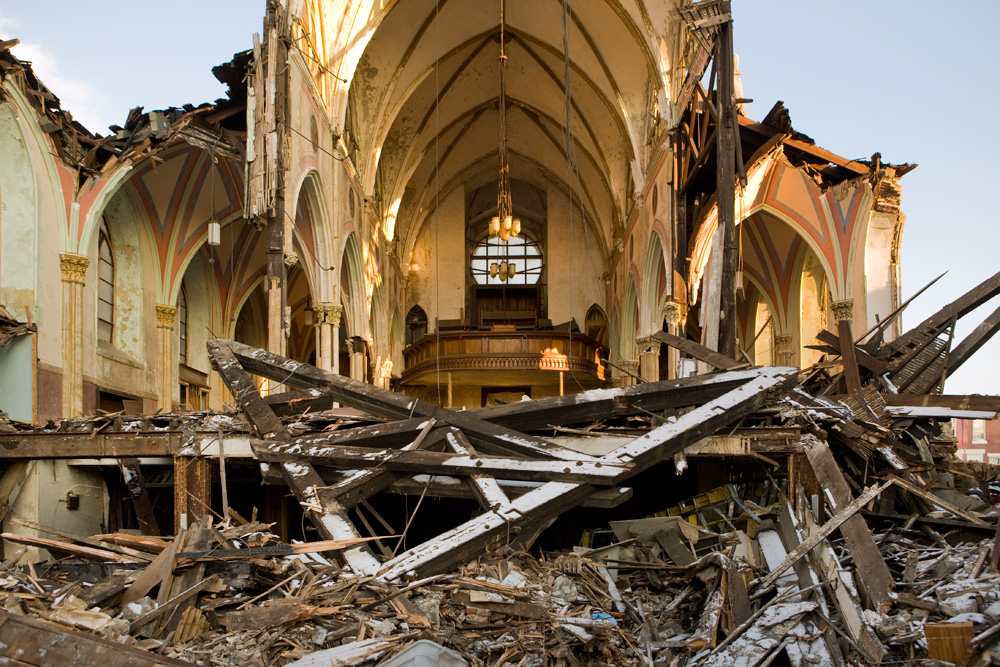It is always heartbreaking when a natural disaster hits a glorious old church building, whether a fire, a flood, or an earthquake. To see a structure that has been so much a part of your life, so much a part of the community’s life, damaged in this way is like having sure foundations pulled out from under you. What you imagined would stand grandly for centuries now sits badly stooped and broken; something eternal has shown its mortality. And yet often in such circumstances, communities find ways of rebuilding and restoring beautiful buildings that have been loved and at the center of people’s lives for so long.
The physical damage and emotional turmoil that results from such tragedies can be magnified into profound confusion and bitter resentment if bureaucratic vultures descend upon the wounded carcass of a beloved church and pick at its bones and carry them away. Too often, damage to an older church building is like blood in the water to a certain breed of liturgical official in the chancery office who may have been eyeing the old building for years with suspicion and contemptuous disregard because of its failure to meet up to the most recent standards of liturgical correctness. “Why are there still altar rails in that church? And pews? That choir loft must go. Why haven’t the confessionals been turned into reconciliation rooms? And those pillars! Who can see around them? Are there sufficient bathrooms?”
Modern churches, like modern houses, seem to require several large, gleaming new tile bathrooms. The days when churches could get along with a small bathroom in the back somewhere for men and another for women are long gone, it seems. New churches need new bathrooms the size of a sports locker room.
In earlier decades, when a church was damaged, the community came together and dedicated itself to rebuilding its beloved church as soon as possible. Now the church community has to wait in fear and trembling to find out whether the chancery officials have decided on their behalf to tear down the decades-old symbol of the community’s heritage in favor of erecting a new, much cheaper building. The decision is usually akin to replacing a grand old nineteenth century hotel with a shiny new Motel 6.
If the parish community puts up enough of a fuss – and a sufficient amount of cash to cover the renovations – the chancery officials may relent and decide simply to require a series of “updates” to maintain what passes now for contemporary standards of liturgical correctness. Pews curved in a theater-in-the-round mode. Less color, more blank white walls. The tabernacle put God only knows where. A large “gathering space” in the vestibule. Carpeting. A piano and a place for the music ministry near the front. In short, the usual.
And if you and the other members of your community don’t want to make these changes? Well, you’re out of luck. And you’re likely to lose the whole building before long if you put up too much of a fuss. Some clerics pay a great deal of lip service to the sensus fidelium and the “age of the laity.” But just try to get them to listen to the laity when they want to save their old church building. Before long, the same age-old clericalism will be rearing its ugly head. “You people just don’t understand.” “You haven’t read the latest documents.” “We’ve called in experts.” It doesn’t matter how many generations of your family were baptized, married, and buried in that church. It may be the “age of pluralism” in doctrine, but there’s very little pluralism when it comes to liturgical correctness and church architecture.
Question: What’s the difference between a liturgist and a terrorist? Answer: You can negotiate with a terrorist.
Renovating older churches costs money, it’s true. But renovating beautiful existing buildings is generally more energy conscious, better for the environment, and shows a much better stewardship of the earth’s resources than expending the energy and resources to tear down and build new.
About 50,000 BTUs of energy are embodied in a typical 50,000-square-foot building. This represents approximately 640,000 gallons of gasoline. Demolishing such building would generate 4,000 tons of waste, enough to fill 26 rails cars, or a train nearly a quarter of a mile long. Even a new “green” building that is advertised as 30 percent more energy efficient (and most rarely stay that way) would take between 35 to 50 years to make up for the carbon unleashed by its construction.
In an age when renewable energy and recycling are paramount values, one would have thought that preserving and restoring older buildings would have become the obvious choice. And yet too often this doesn’t seem to be the case.
A disjunction this wide between a stated value and actual practice can usually be explained by the intervention of some ideology. In this case, I suggest the ideology is bound up modernist architectural principles (architecture should express “the spirit of the age” claimed the modernist architect Mies van der Rohe) and with what has been deemed necessary by current liturgical correctness.
All of the modern functional necessities such as bathrooms and elevators can be included in a well-planned restoration. Good architects figure out how to work them seamlessly into older buildings all the time. And if you allow the people to raise the necessary funds so that they can keep their church, they’ll be eternally grateful and love you forever. Force them to tear it down and start over, and they’ll harbor bitter resentment as only those can who feel that their beloved matriarchal grandmother has been violated.
Leave the modernist architectural and liturgical ideologies behind. People – regular people, poor people, people not infused with an intellectual ideology – want beauty that feeds their spirits. And they want a church that looks like a church. Giving them one or preserving the one they already have is worth every penny.















